In French, they’re called L’appel du vide — the call of the void. In English, you might know them as “intrusive thoughts” — passive, fleeting ideas of how easy it would be to turn your car into oncoming traffic or jump into the path of an incoming train. You’d never act upon them…normally, anyways.
Today, the Beat can exclusively reveal that, beginning in July of 2019, Vault Comics will publish Resonant, written by David Andry with art by Alejandro Aragon, colorist Jason Wordie, letterer Deron Bennett, and designer Tim Daniel. The story takes place in a world a decade after the first Waves. These Waves accessed the dark thoughts inside most, if not all of us, and encouraged us to act out our respective calls of the void — to apocalyptic results. Per Vault:
A decade has passed since the first Waves hit, unleashing humanity’s darkest impulses and plunging the world into chaos. Paxton, a single father of three, must venture from the secluded haven they’ve built to restock the medicine his chronically-ill youngest son needs to survive. When the somewhat routine trip goes awry, Paxton and his children—now separated—will battle everything in their path to reunite.
Described as what happens when The Odyssey meets Y: the Last Man, Andry was inspired to write Resonant after years of working the convention circuit on behalf of Skybound, meeting “dozens of wonderful creators” who all gave Andry the same advice: “if you want to make comics, make comics.” From that seed of advice, Andry started telling stories that he describes as “small and intimate at first, focusing on characters, relationships and love, worry and joy. Letting my stories grow as my skill and confidence increased.” After five years of this, Andry felt confident enough to unleash his Odyssey — and it came from an idea that had captivated him since college. In his words:
I was leaning out over a third floor balcony waiting for class to start. I thought about jumping. More accurately, I was worried that if I didn’t step back, I would jump. Pre-Google and worried that if I talked to anyone about this impulse, they’d think I was crazy, I sat with this heavy on my mind for a long time. As a writer, I wanted to use it. Later, I found out that it was a fairly common urge called High Place Phenomenon or the Call of the Void. For nearly twenty years, the idea germinated in my brain, unable to find fertile soil in which to grow. And then, one afternoon doing the dishes, the world of Resonant sprouted, fully formed. Everyone would follow their Call of the Void. Everyone, all at the same time.Ideas aren’t stories. I put myself in that world, what would be the worst thing, the worst situation I could be in? Separated from those I love. No, make it worse. As a physical therapist, I’ve spent years caring for people with injuries and limited function. There was my ticking clock, someone was sick, someone needed help, I needed to get back now! And I had it, Odysseus under a time crunch. A journey of desperation in a world of madness. A struggle of survival when you are all alone. Not just for the one on the journey, but for the ones left behind. Hands dripping with soapy water, I rushed to my computer. But I hadn’t needed to rush, Paxton, Bec, Ty and Stef were with me, part of me that I couldn’t forget if I tried. Their story was as small and intimate as the first thing I’d written, it was still about love and doubt, about relationships and family. About connection and what we’ll go through to keep those we care about safe.
Regarding the leads of the story, Andry describes Paxton as an “unsettled soul.” He’s something of a self-reliant survivalist, as Andry mentions that he “has always been searching for more, for more meaning to his life” which “leads to the skills that he demonstrates throughout the book, harvested from a lifetime of this exploration.” Moreover, Andry reveals that at the start of this story, we don’t find Paxton and his kids living in the woods to avoid the Waves — this isolation was a choice that Paxton had made before the first signs of chaos, as “through his life, the more he experienced people, the more he wanted to get away from them.” But now, on the journey we find Paxton on in Resonant, we will see him go through “a crucible, burning away all that doesn’t matter and revealing to him what is truly important.”
When asked about how Resonant fits into Vault’s larger publishing lineup, co-founder and editor-in-chief Adrian Wassel said:
I consider Resonant one of our broadest reaching stories to date. It has a clean, marketable outer shell. It’s an odyssey after the death of the world. A quest out, and a return home. Tropes written into our reader-DNA. But baked into these super accessible tropes, the team has crafted a story about more than just family and survival. Resonant contains themes of problematic binaries both broad and narrow—healthy vs. ill, able-bodied vs. persons with disabilities, emotionally stable vs. unstable—showing how their echoes still plague us at the end of the world. Well, the end of this world and the start of another—which is all the more powerful because we get to see the burgeoning of institutionalized hurt alongside the ambition to build something better. New pains. New promises. Many the direct result of those echoes.
Beyond the creative genius of the project, Resonant is special to me because of David Andry, co-creator, writer, and originator of Resonant. David is one of comics’ unsung heroes. If you’ve been to any comic book convention since 2010, you’ve probably met David. He’s probably sold you a comic. He may have even sold your comic to a fan. He’s been instrumental in the success of so many careers, and he’ll never say a word about it. He’ll probably get upset that I’m saying this much. But he’s supported hundreds of new voices, some of whom are now household names—and slung thousands upon thousands of comics. I, for one, may have never discovered Heathen without David. And that’s just one tiny example. The comics community talks a lot about supporting the people who deserve it. If we don’t all turn out to support David, who’s been here for a decade supporting us as a volunteer and fan…we’ll know once and for all we’re not as good as our word(s).
In keeping with Vault’s promise from earlier this year to publish a “Vault Vintage” cover for every new #1 released in 2019, the published revealed that Resonant #1 will feature an homage variant based upon Vertigo’s Y: the Last Man, created by Brian K. Vaughan and Pia Guerra (and, at one point, edited by the Beat herself, Heidi MacDonald). When asked about the inspiration for this variant, Andry gave full credit for it to Vault’s Vice-President of Branding and Design, Tim Daniel. Andry said that Daniel gave him “a couple of excellent options, but once I saw Y it was a no-brainer. Brian K. Vaughn is one of my favorite writers of all time and Y shares so many similarities with Resonant. A post-apocalyptic journey of a man trying to get to those he loves? Easy choice!”
The cover is drawn and designed by Nathan Gooden and Tim Daniel.


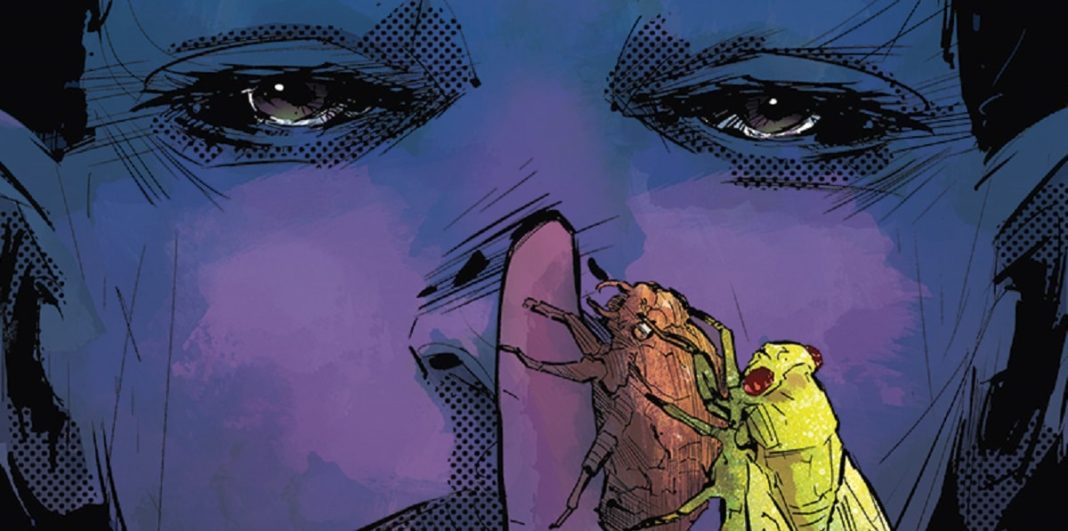
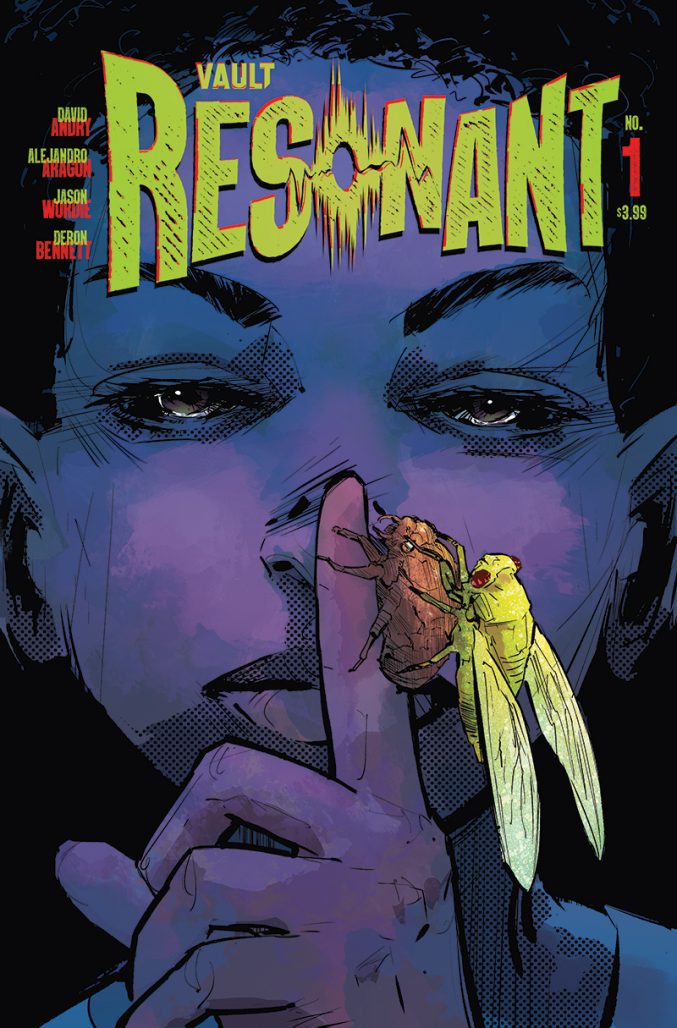
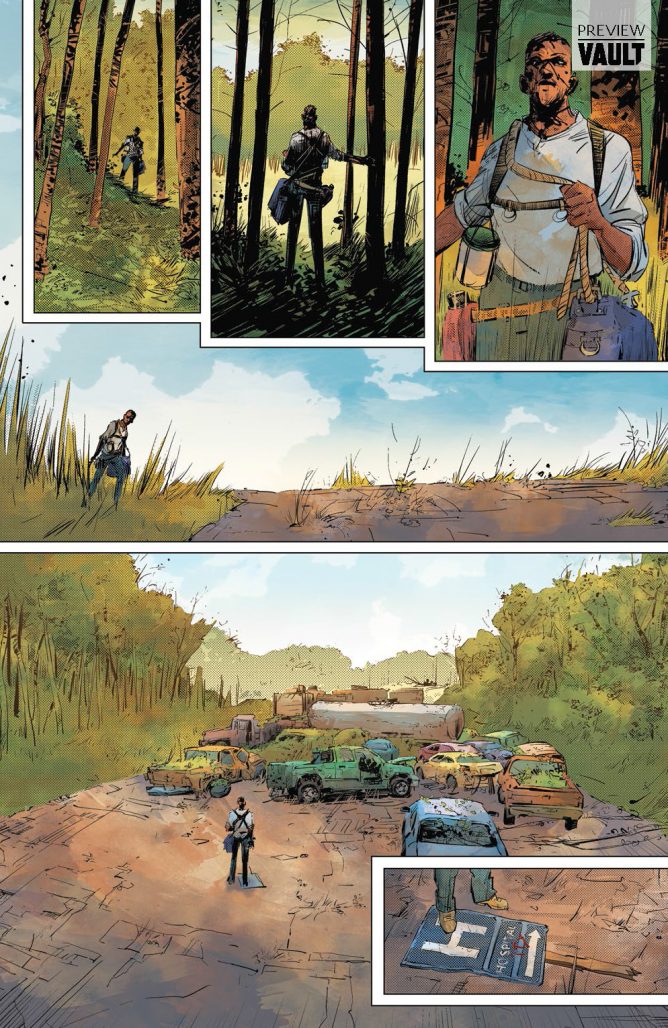
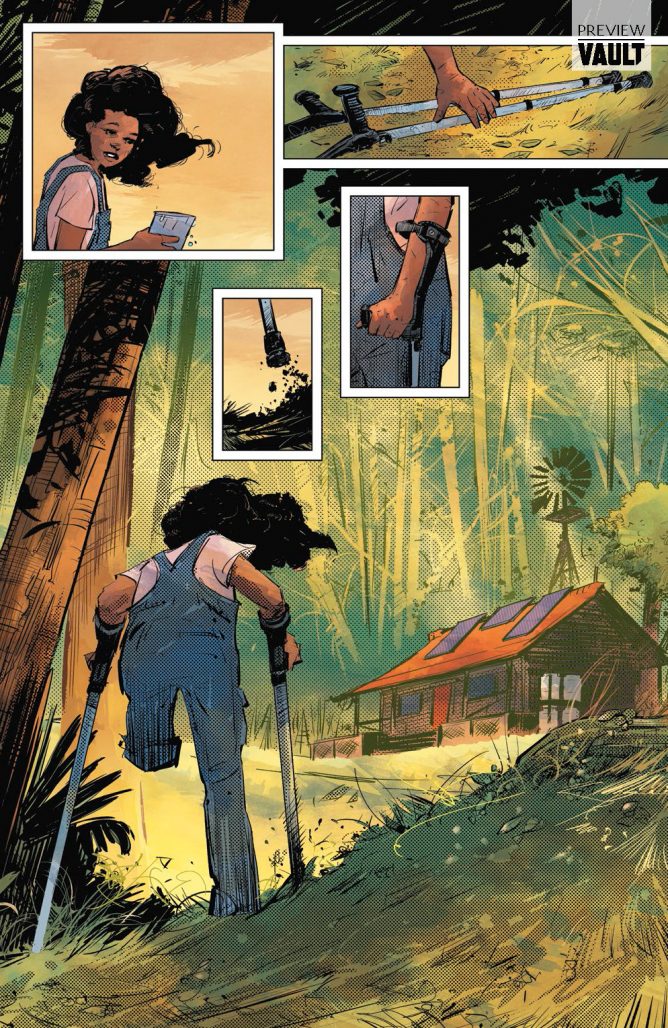
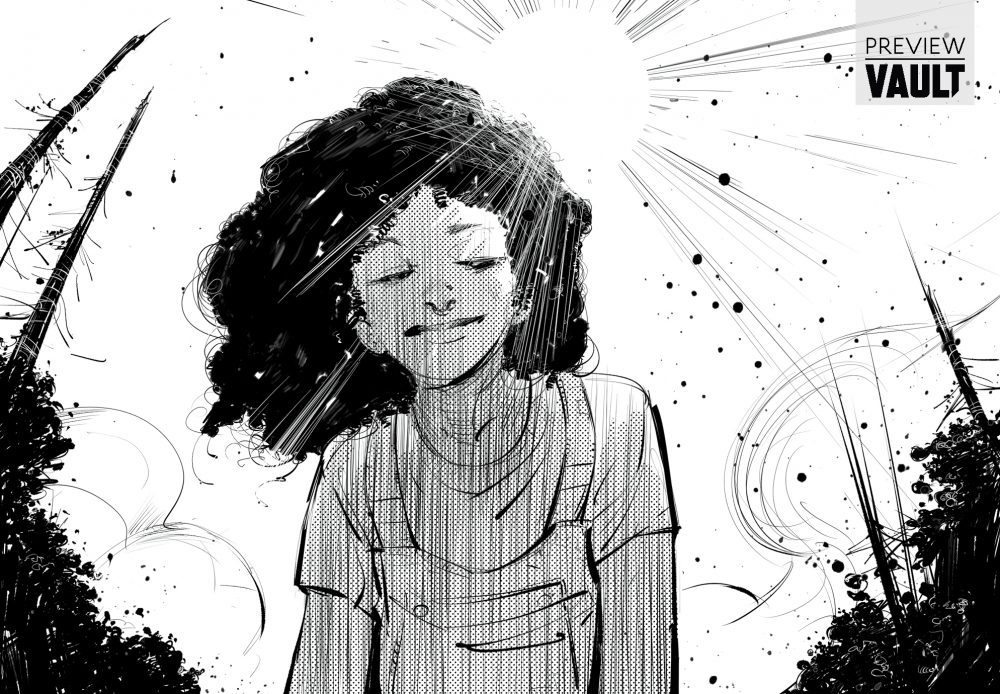
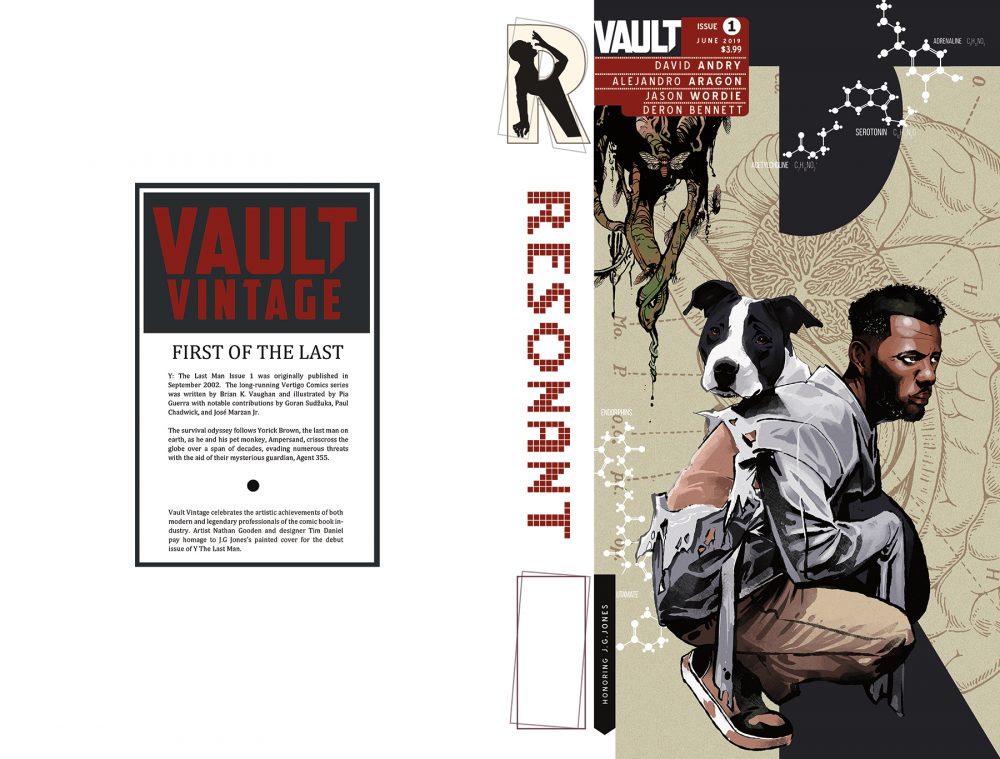

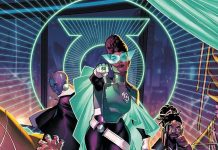



Comments are closed.